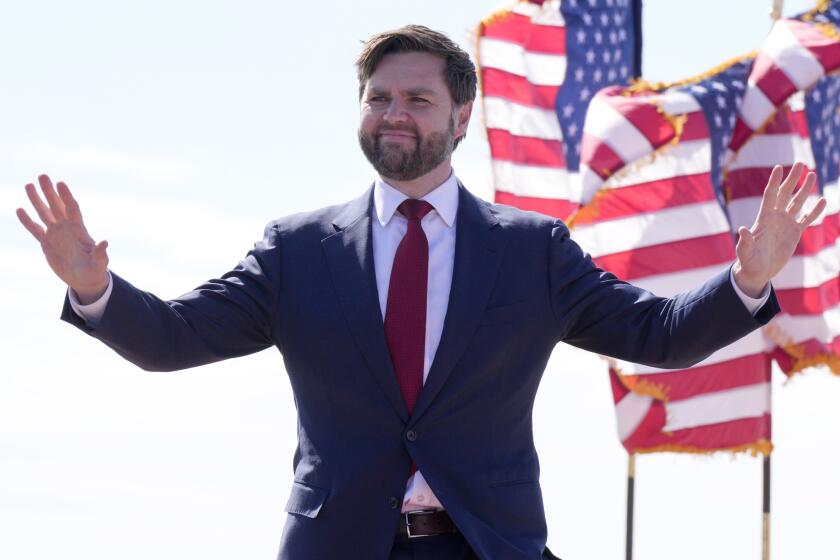Newton: Supt. Deasy, head of the class
Of all the jobs in Southern California, it’s hard to think of one that is harder to do well than serving as superintendent of the Los Angeles Unified School District. The mission — to educate hundreds of thousands of young people of varying backgrounds, classes and languages — is staggeringly complex. The constituents — from parents to reformers to teachers unions — are varied and sometimes at odds. The budget is regularly whipsawed. And the superintendent’s bosses — the seven members of the school board — are highly politicized and driven by interests that sometimes conflict with educating children.
For the last two years, Supt. John Deasy has been the man executing that mission and balancing those interests. He has not won every battle or prevailed in every debate — his bid to equip every student in the district with a tablet computer, for example, ran into a skeptical bond oversight committee last week — but he has impressed a wide swath of observers and produced encouraging results. That’s something that could not always be said for some of his predecessors, such as David L. Brewer, the retired vice admiral who struggled to grasp the basic workings of the district, much less how to address its urgent needs.
Deasy, by contrast, is all about urgency. He moves quickly, talks fast and is ever-present across the school system, starting his day at dawn, showing up on campuses and buzzing through the district’s administrative offices. His admirers worry about his load; his critics suggest he spreads himself too thin. But all agree that he’s relentlessly driven by the central demand of his position: the need to improve learning.
“I’m incredibly proud of what we’ve done in the area of student achievement,” he told me last week. The district’s score on the Academic Performance Index, a state measure of student achievement, jumped 16 points last year and 19 points the year before that. Those are greater gains than any other urban school district in California had during the period.
And that’s despite grueling budget cuts. Deasy has cut the district headquarters staff by 54% in two years. He is relieved that he won’t have to shorten the school year, as the district was preparing to do if the tax increases in Proposition 30 hadn’t been approved by California voters this month.
“Deasy is the best superintendent Los Angeles has had in my lifetime,” said Caprice Young, a former school board member who now serves as vice president of education at the Laura and John Arnold Foundation. She credits Deasy with an ability to both focus on achievement and navigate the complexities of his highly political job. Still, she, like others, worries that progress remains too slow and that incremental achievements should not distract from the need to reach for major reform.
“You don’t go up in a hot-air balloon if you’re aiming for a moon launch,” she said.
Other close observers of Deasy’s tenure echoed those impressions, crediting him with progress while expressing concern that his board, which includes several members who owe their positions to the support of the teachers union, will do everything it can to hold him back. Just last week, the board floated a number of proposals intended to thwart creation of additional charter schools, which the union fears.
In our conversations, Deasy acknowledged that progress is difficult and that politics make reform challenging. The area served by the district includes more than 20 municipalities, each with its own mayor, as well as an array of Assembly and state Senate districts. Parent groups and education advocates have strong views. And then there are the 11 unions representing district employees, including the sometimes combative United Teachers Los Angeles. “The politics,” Deasy acknowledged, “are intense.”
In light of that, Deasy’s record at encouraging innovation on campuses may be the greatest testament to his leadership thus far. He secured revisions in the contract with teachers that allow schools to experiment with such things as longer hours and school years and home visits to students. If more than half the teachers on any given campus agree to modifications such as those, they can convert a school — and that’s already happening.
There are more crises ahead. Proposition 30 saved the district from drastic cuts, but it didn’t do much to restore already diminished programs. Failure to avert the so-called fiscal cliff in Washington could harm the district, which is a major recipient of federal money. City and school board elections could also lead to a shift in district priorities.
But one measure of Deasy’s success may be found in a conversation that is not occurring. Many critics once called for the breakup of L.A. Unified, arguing that it was just too big to be efficient. “I don’t hear that anymore,” he remarked. Neither do I.
Jim Newton’s column appears Mondays. His latest book is “Eisenhower: The White House Years.” Reach him at jim.newton@latimes.com or follow him on Twitter: @newton_jim.
More to Read
A cure for the common opinion
Get thought-provoking perspectives with our weekly newsletter.
You may occasionally receive promotional content from the Los Angeles Times.











